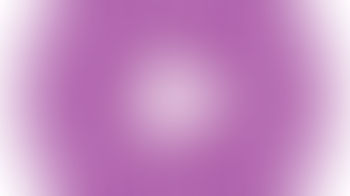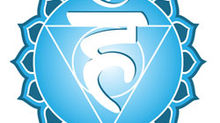What is Yoga?
- Leila Knight
- Jul 30, 2015
- 4 min read
Is yoga the modern form of aerobics, with millions of women (and men) sporting stretchy pants and toting yoga mats? Millions of yoga poses are being struck around the world, seeming to compete against one another for stunning backgrounds, impressive physical feats and the latest fashion being featured. (Ok, I'm a little guilty of this one - I couldn't resist getting some "snoga" shots whilst I was in Canada.Can you blame me - it was truly gorgeous!!)
Yoga may seem to be all the rage; the new fashionable health/fitness thing – it has even evolved into an industry of its own. But what is yoga really about?


Although many health benefits may be gained from practicing yoga, it is not the reason why yoga has survived so long (it’s been around for over 2000 years). The purpose of the physical side of yoga (asana) is actually to stretch the body and open it enough to allow the body to sit for a long period of time to meditate, where the path of yoga continues.
Let’s go back to the root of the word. In Sanskrit, yoga means “union” or “to yoke”. Yoga is a tool to join body, mind and soul. It is not only a physical practice; it is also a mental, emotional and spiritual practice. Let’s take a deeper look at this.
Yoga philosophy tells us about the “8 limbs of Patanjali/yoga”, also known as Ashtanga (not to be confused with the Ashtanga style of yoga). Asana, or the physical postures, is only one part of yoga. The ultimate goal of yoga is “Samadhi” or integration / enlightenment.

Yoga is a journey inward. By bringing awareness to the sensations of the body, mind and focusing on the breath through the practice, we join body and mind. We become aware of how we feel when we do certain stretches – perhaps fear, dislike, excitement, attachment to a pose or anger may come up. That is ok – and quite normal.
When we bring our attention back to the breath, we break away from those thoughts and emotions – we become the observer. We stay in the present moment. By stretching the body, we also allow blocked energy to move freely through the body once again.
Asana is the third of eight steps in this journey to integration.
The fouth step is Pranayama, or breath control. There are certain breathing techniques which help to channel the energy in our body. We can balance energy between the left and right sides by practicing alternate nostril breathing (nadi shodhana). Breath retention (kumbhaka) and breath of fire (which can help with fear, anxiety and depression) are a couple of other examples of breath control. There are benefits to each, but again, by focusing our concentration on the breath, we are brought back to the present moment. The now. When the breath is calm, the emotions and desires are quietened, the mind is stilled.
After Pranayama is Pratyahara – the withdrawal or control of the senses. This leads to inner awareness. When one meditates and focuses less on the outside world and external stimuli, one actually becomes even more aware of these things. We become present and less reactive to these things. One also becomes more aware of the internal dialogue and environment.

Next up is Dharana – single-minded concentration. This occurs when one focuses on one thing, eg: the breath, sound or sensations on/within the body. Dharana is a state that is free from muscular tension as well as any other tension.
The 7th limb is called Dhyana – This is the point where the single point of focus/concentration dissolves. Awareness and lucidity are at their sharpest, accompanied by calm. The internal environment dominates awareness.
The final step of the 8 limbs of yoga is called Samadhi – complete integration. It is the sustained experience of meditation. It is associated with deliberation, blissfulness, reflection and I-am-ness.
We can see that each step takes us further away from the physical, gross plane, towards the subtler emotional, mental and spiritual planes.
Clearly, yoga is not merely trying be a human pretzel – it goes much further than that. Whether you ever get your foot behind your head or not is irrelevant.
So, those are limbs 3-8. What about the first two?
The Yamas and Niyamas could be described as a code for living. Kind of like the 10 “commandments” of yoga, they provide ethical guidance for how to live.
The Yamas: 5 internal ethics – Ahimsa (non-violence in thought, word and action); Satya (truth – as it is); Aparigraha (greedlessness – not accumulating non-essentials); Asteya (not stealing) and Bramacharaya (chastity/faithfulness, not over-consuming).
The Niyamas: 5 observances – Sauca (inner and outer cleanliness), Santosha ( contentment – accepting what is and learning from it); Tapas (being unaffected by opposites, keeping the body fit, eating and breathing correctly and handling inner urges without outer show); Svadhyaya (self-inquiry, to know oneself) and Isvarapranidhana (relinquishing the ego; daily spending some time in recognition and realisation that there is something greater than us that guides us all).

Therefore, yoga is a lifestyle, a tool to use daily to help all to relinquish things that plague us (eg, doubt, fear, anger) and to help us to become better versions of ourselves. It is for everyone.
Yoga is not (only) the stuff that happens on the mat. It takes place anywhere, at any time of day or night, both when in the presence of others or when we’re alone. Yoga is a state of being – it is the union of body, mind and soul.
Whether a yogi wishes to follow the 8 limbs or Ashtanga or not, they will benefit from practicing yoga. Even if one does not meditate, only practices yoga for physical benefits, the yogi will benefit. Their mental, emotional and spiritual bodies will also benefit, as everything is connected.
There is no right or wrong way to do things – everyone is different and walking their own, unique path. Yoga is a guide. What we learn or take from it, is up to us.









































Comments